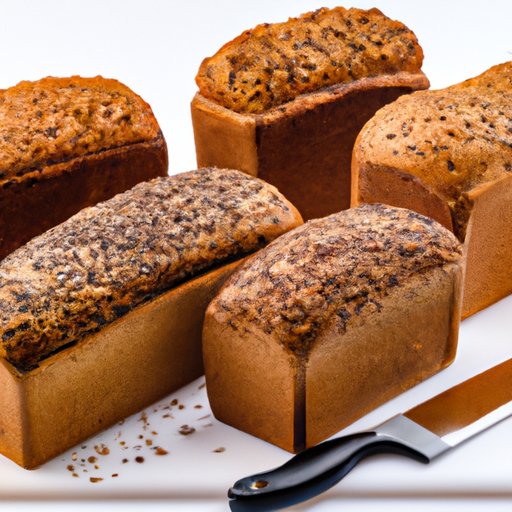
How to Keep Bread Fresh: Tips and Strategies
Nothing beats the aroma and taste of freshly baked bread, but it can be frustrating to see it go stale or moldy in just a few days. Fortunately, there are several strategies you can use to keep your bread fresh for a longer period. In this article, we’ll explore the importance of proper storage, the role of temperature, the advantages of plastic-free storage, freezing bread, reheating bread, and choosing the right variety. By the end of this article, you’ll be equipped with practical tips and actionable steps to keep your bread fresh and delicious for longer.
Proper Storage
The way you store your bread can make a big difference in how long it stays fresh. One common mistake is to store bread in the fridge, which can actually accelerate staleness. Instead, consider storing your bread in a cool, dry place such as a pantry or bread box.
Paper bags are a good option for storing bread. They allow some air circulation while also preventing excess moisture from building up. Bread boxes are another option that can keep your bread fresh for longer. Be sure to choose one that has a tight-fitting lid to prevent air and moisture from getting in. Airtight containers such as Tupperware or plastic bags can also work well to keep out moisture and air.
To get the most out of these storage options, it’s always best to keep your bread whole and cut it as needed. Cutting the bread exposes it to air, which can dry it out faster.
Freezing Bread
If you have more bread than you can eat, or if you want to store bread for longer than a few days, freezing can be a viable option. To properly freeze bread, start by letting it cool to room temperature. Then, wrap it tightly in freezer-safe plastic or aluminum foil and put it in an airtight bag to prevent freezer burn.
When it’s time to eat the bread, let it thaw at room temperature, and then reheat it in the oven or toaster. Keep in mind that freezing bread can change its texture, so it’s best to use it for toast or grilled sandwiches rather than eating it fresh.
The Role of Temperature
The temperature of your bread’s storage location can also impact its freshness. Bread lasts longer in cool and dry environments, while heat and humidity can accelerate mold growth and spoilage. Here are some strategies to maintain a cooler and drier environment:
- Keep your bread away from direct sunlight or heat sources like the stove or oven
- Consider storing your bread in a cool room or part of the kitchen
- Pack your bread in linen bags or wrapping paper. This option prevents excess moisture from collecting and encourages air circulation.
Plastic-Free Storage
While plastic bags may seem like a convenient way to store bread, they can actually speed up spoilage due to increased moisture. There are several eco-friendly options for storing bread that can help maintain its freshness and reduce plastic waste.
Linen bread bags are a great plastic-free option that allows air to circulate while also keeping bread fresh for up to a week. Wax paper is also a good alternative to plastic bags, as it’s both moisture resistant and compostable.
Reheating Bread
A common problem is bread becoming stale over time, making it unsuitable for eating. Reheating bread is a great way to refresh it. Here are some methods for reheating bread and some tips for maximizing their effectiveness:
- Toaster: If you want crispy bread, the toaster is the best option. Toast each side for about a minute.
- Oven: If you want to reheat a whole loaf or want soft bread, use the oven. Preheat the oven to 350°F, wrap the bread in foil, and bake for 10-15 minutes.
- Microwave: This method is easy and quick, but it can make your bread rubbery if overdone. Sprinkle some water on top of the bread, wrap it in a damp paper towel, and microwave at the lowest setting for about 10 seconds.
Choosing the Right Bread
Not all bread varieties are created equal when it comes to shelf life. If you want bread that stays fresh for longer, make sure to choose a variety that has a long shelf life. Some examples include sourdough, rye, and whole-wheat bread. Avoid bread that has added chemicals or preservatives, as they can affect the bread’s taste and texture.
Conclusion
In conclusion, knowing how to keep bread fresh is essential to avoid waste and enjoy your bread for longer. By using proper storage options, freezing, controlling temperature, using plastic-free alternatives, reheating, and choosing the right bread, you can extend the life of your bread and enjoy it without any waste. So the next time you buy a fresh loaf of bread, consider these strategies for keeping it fresh and delicious.




